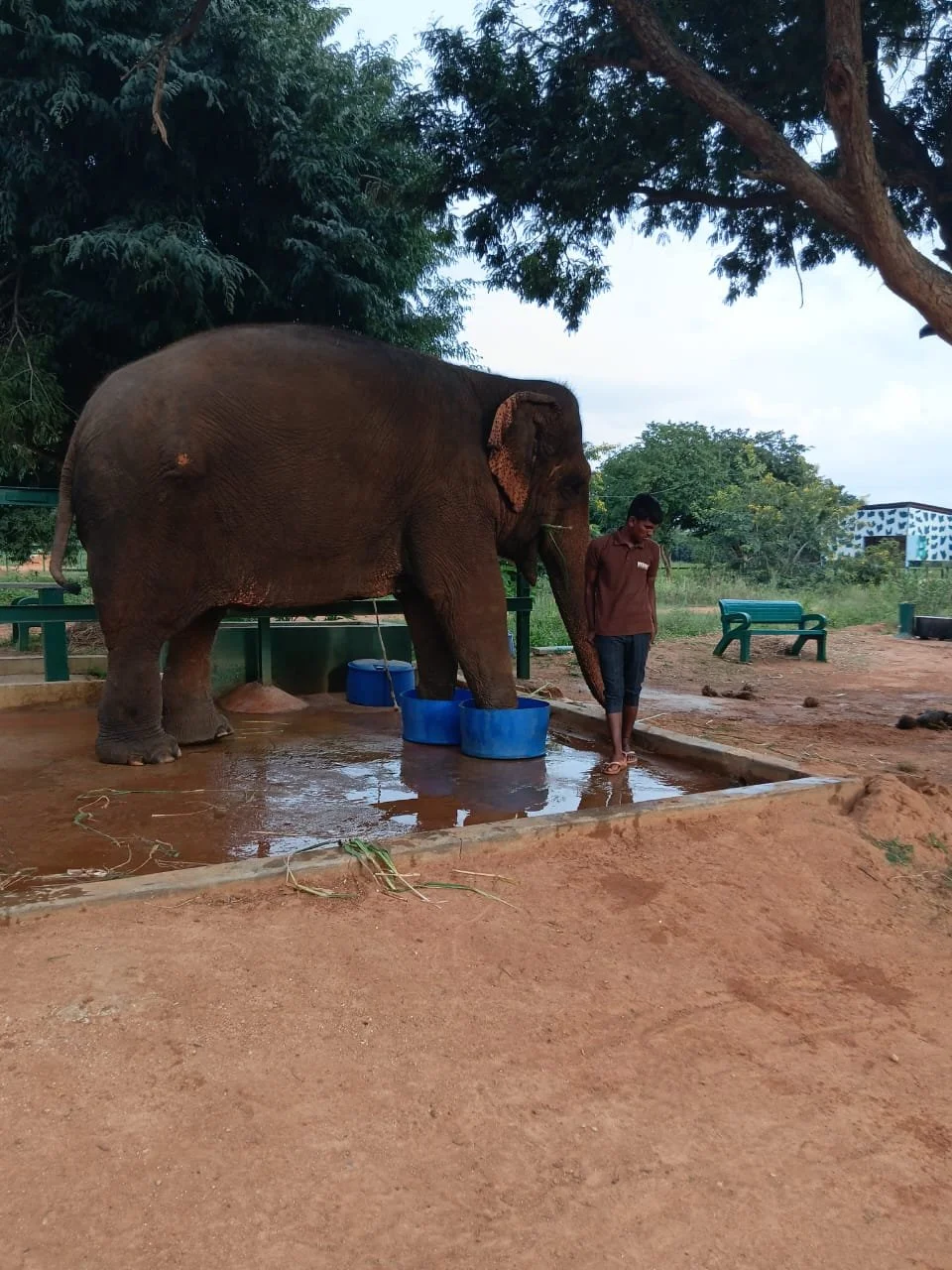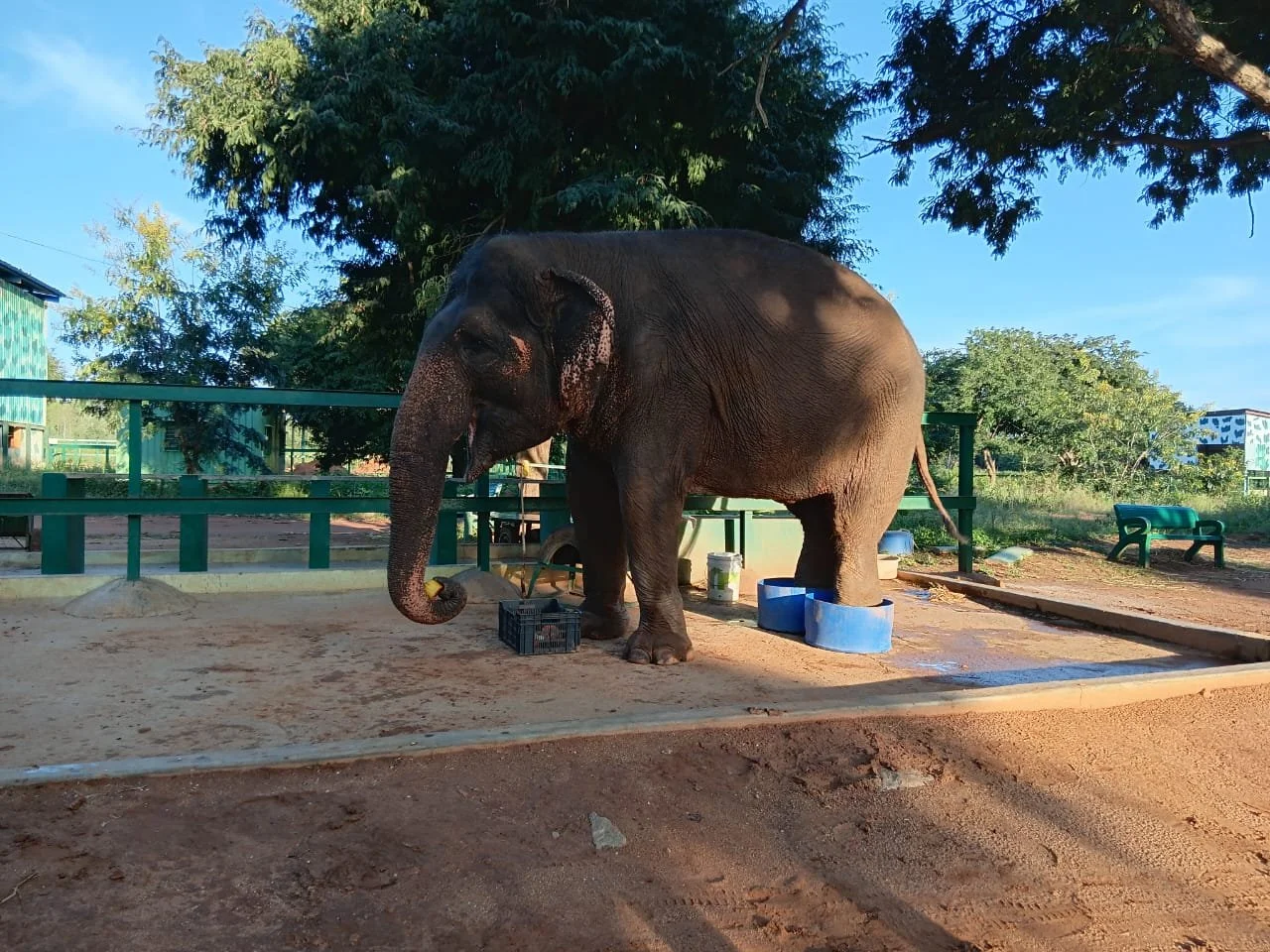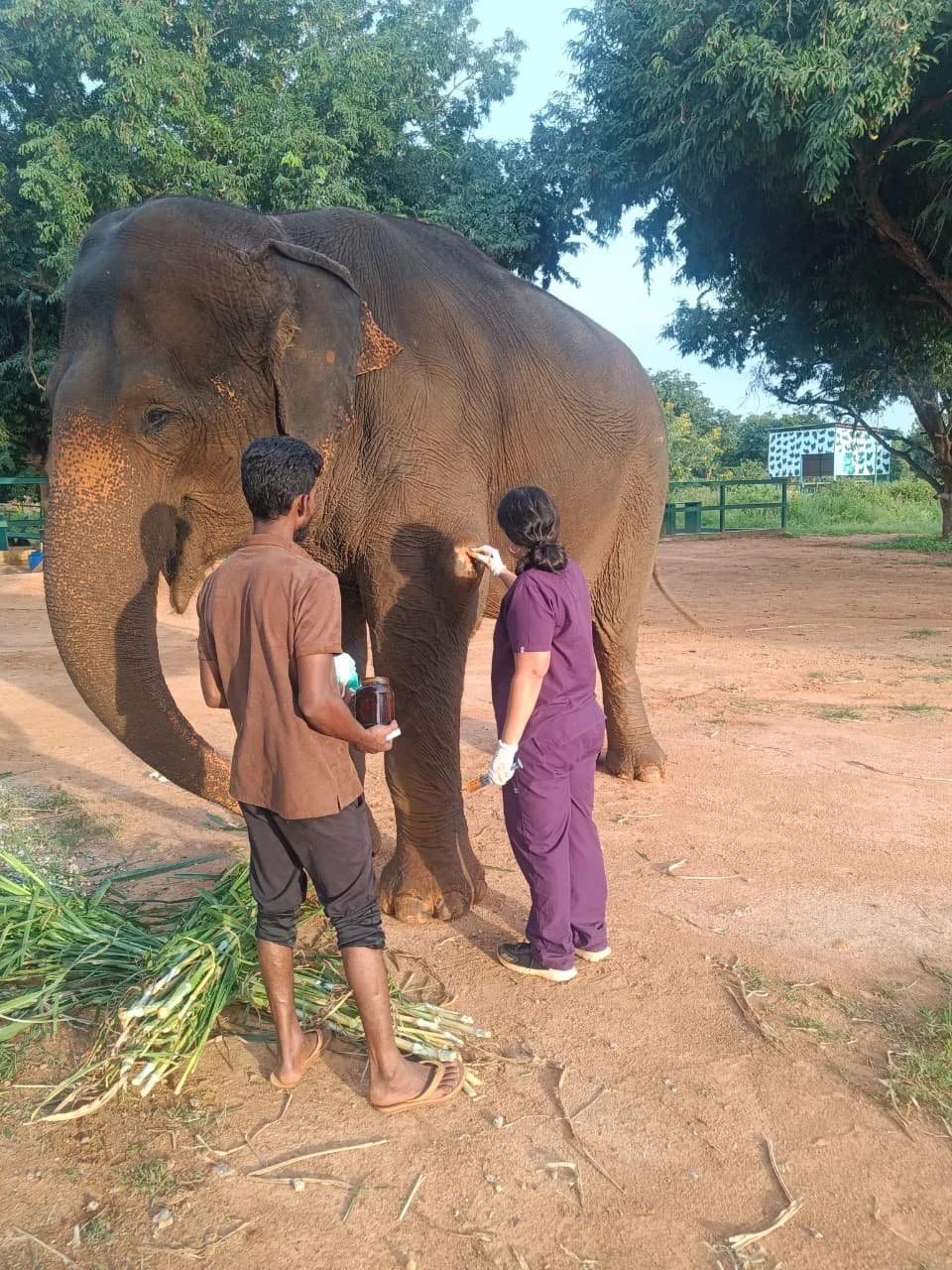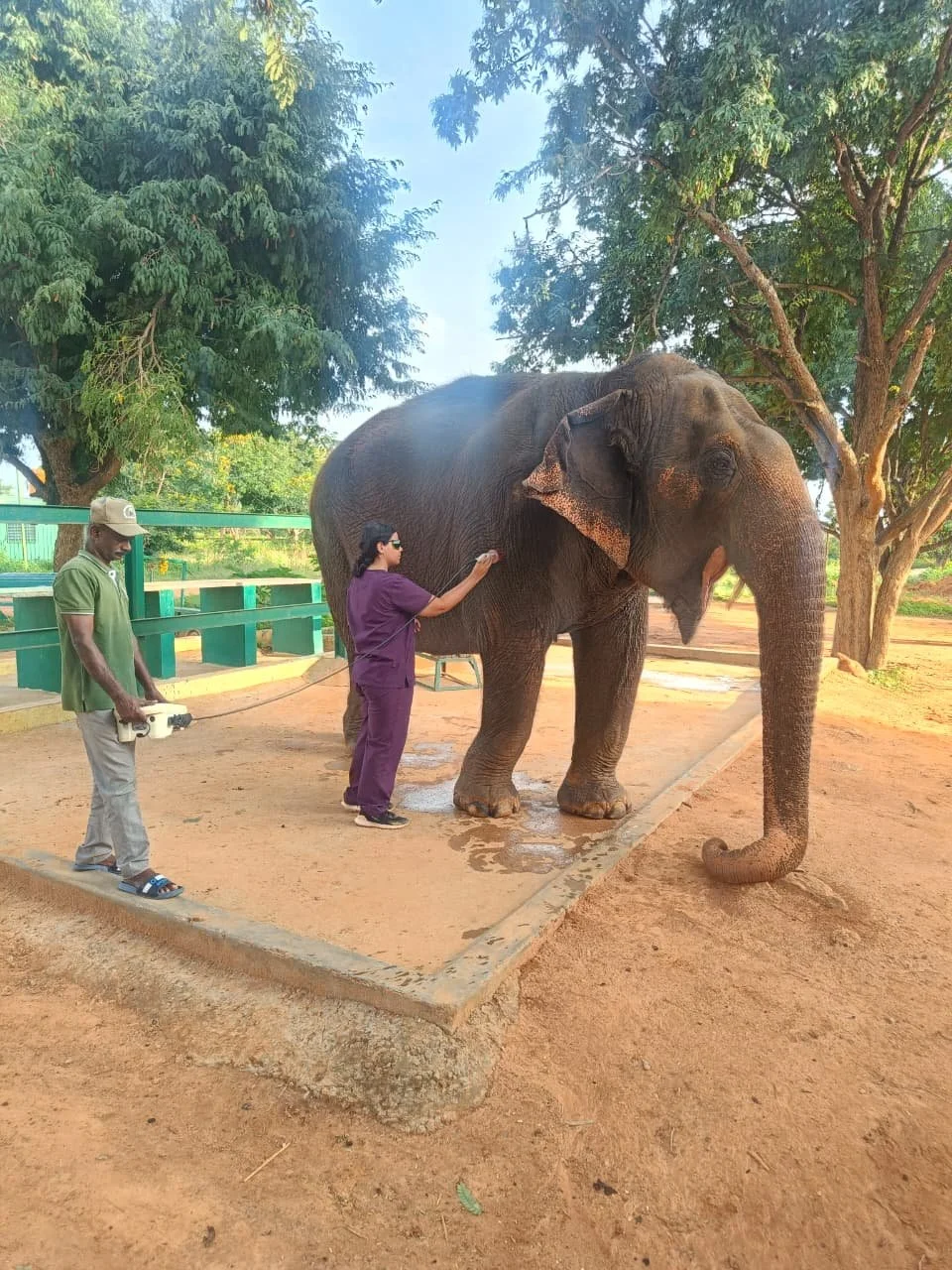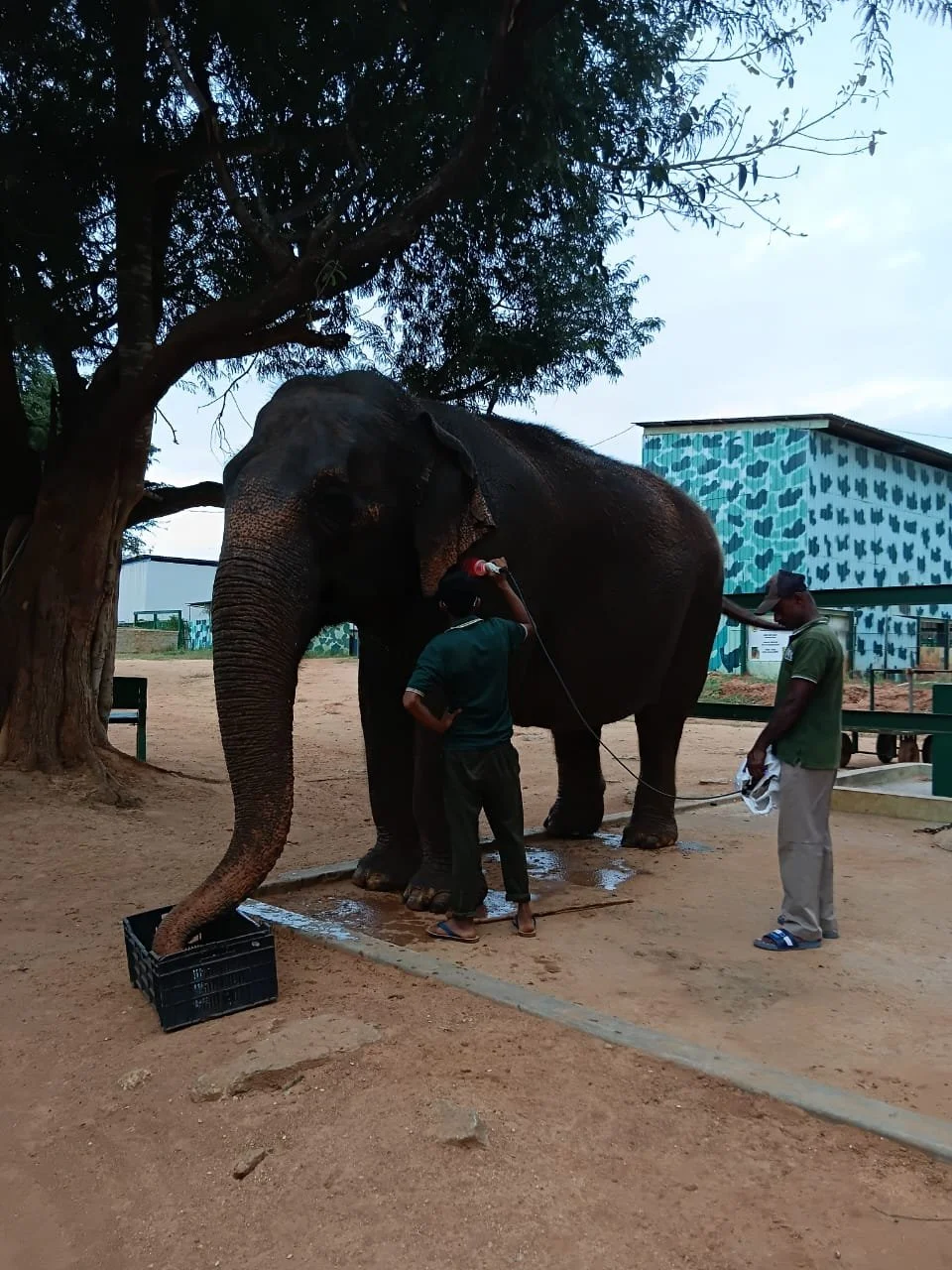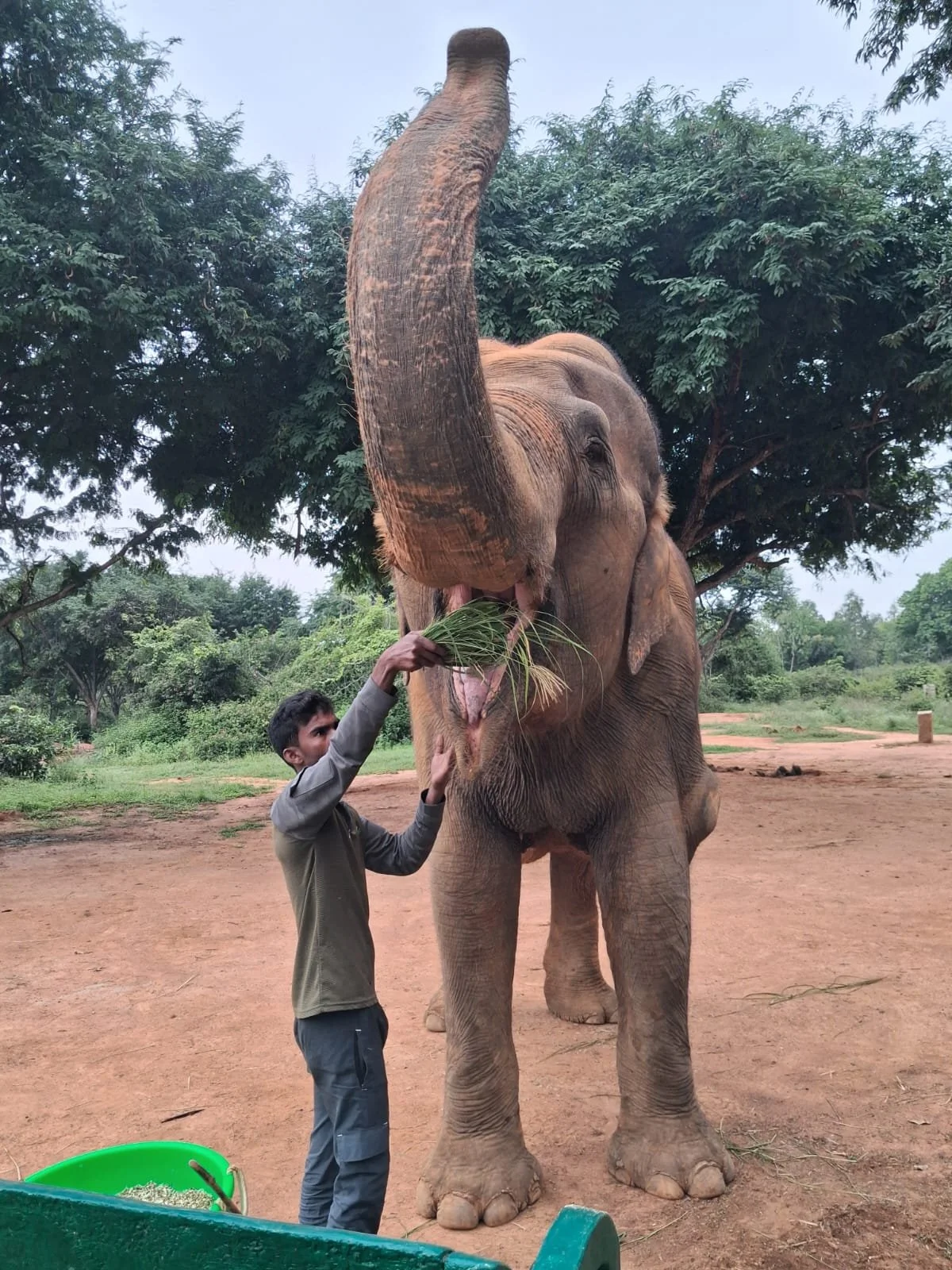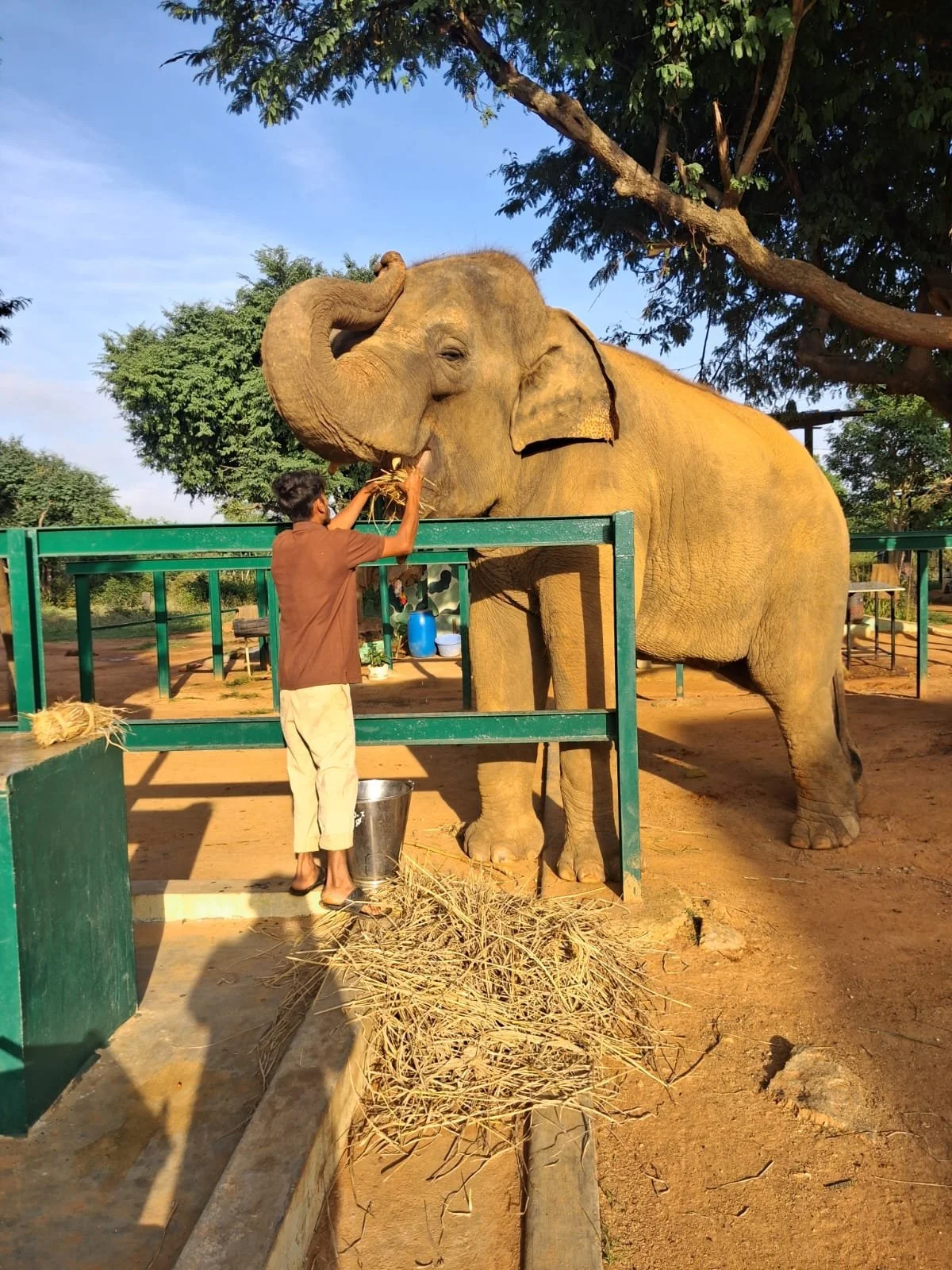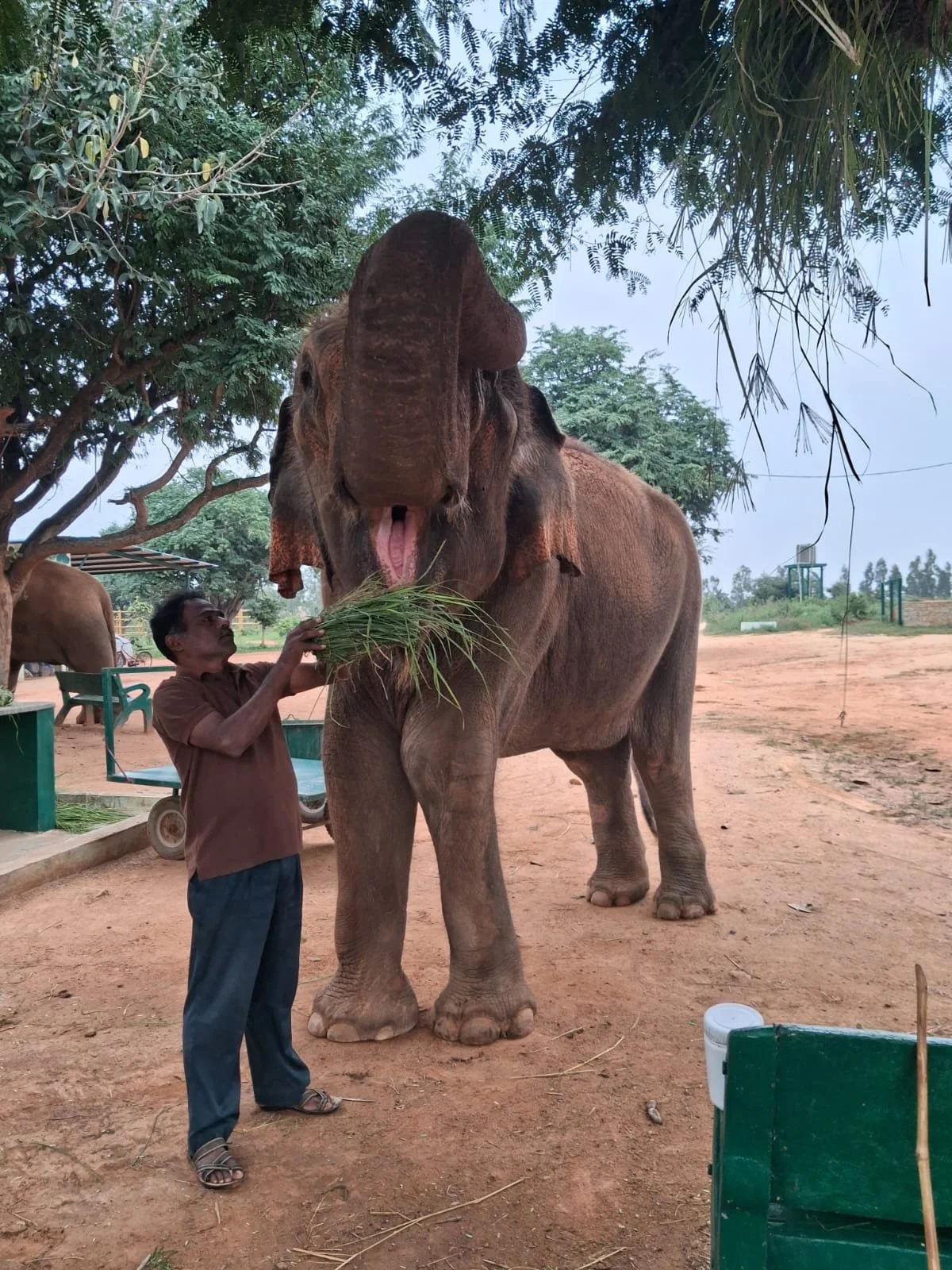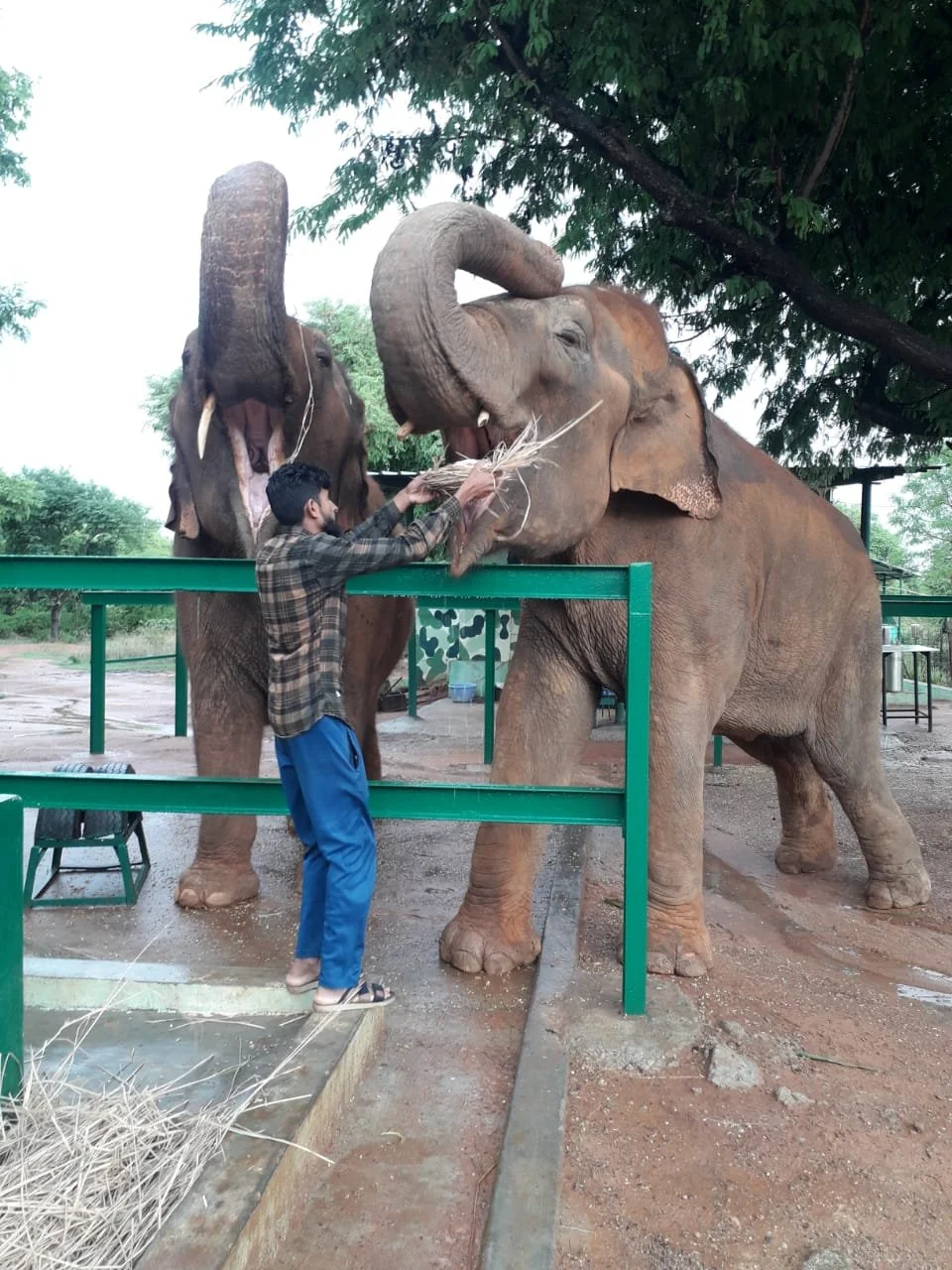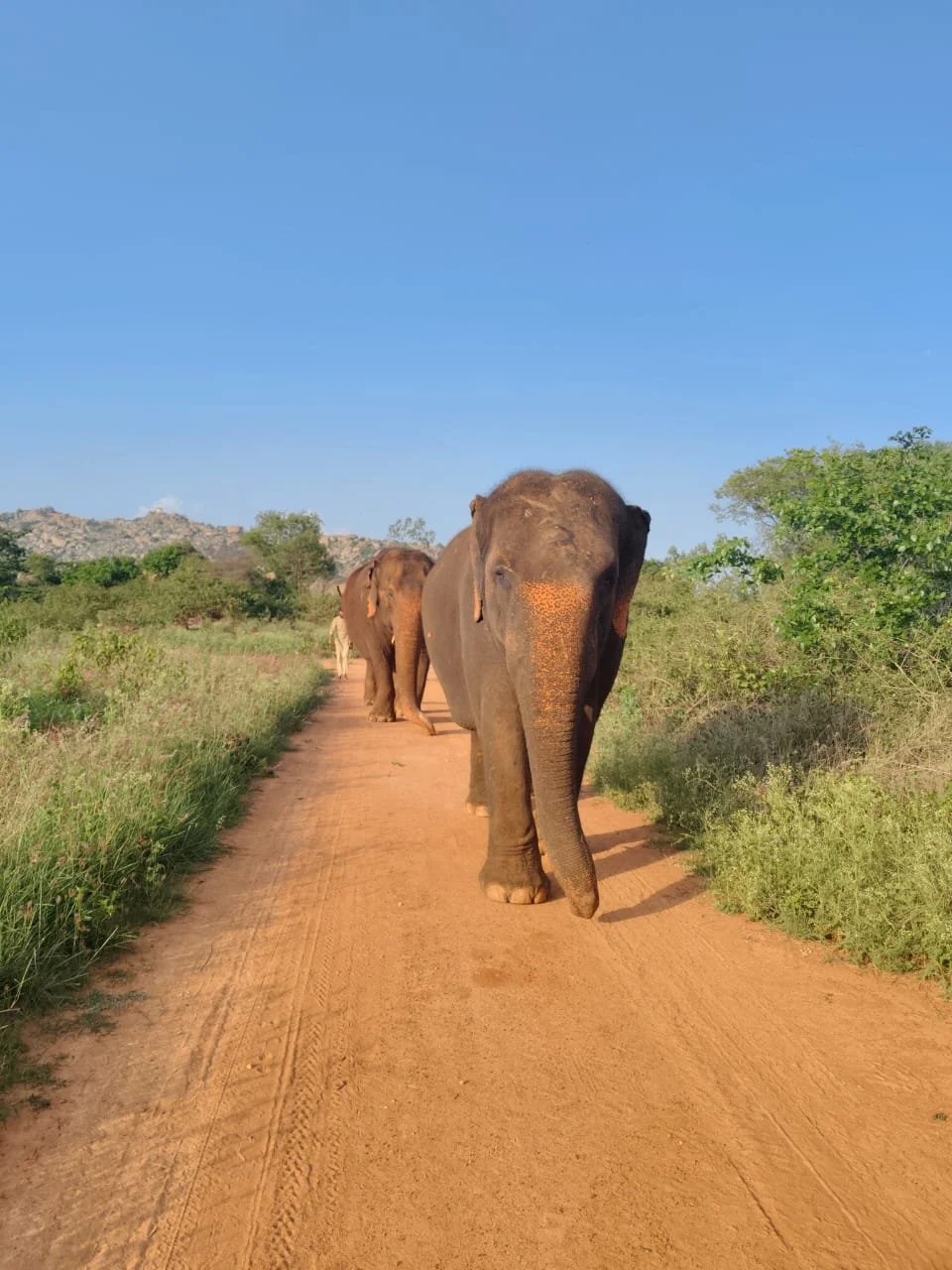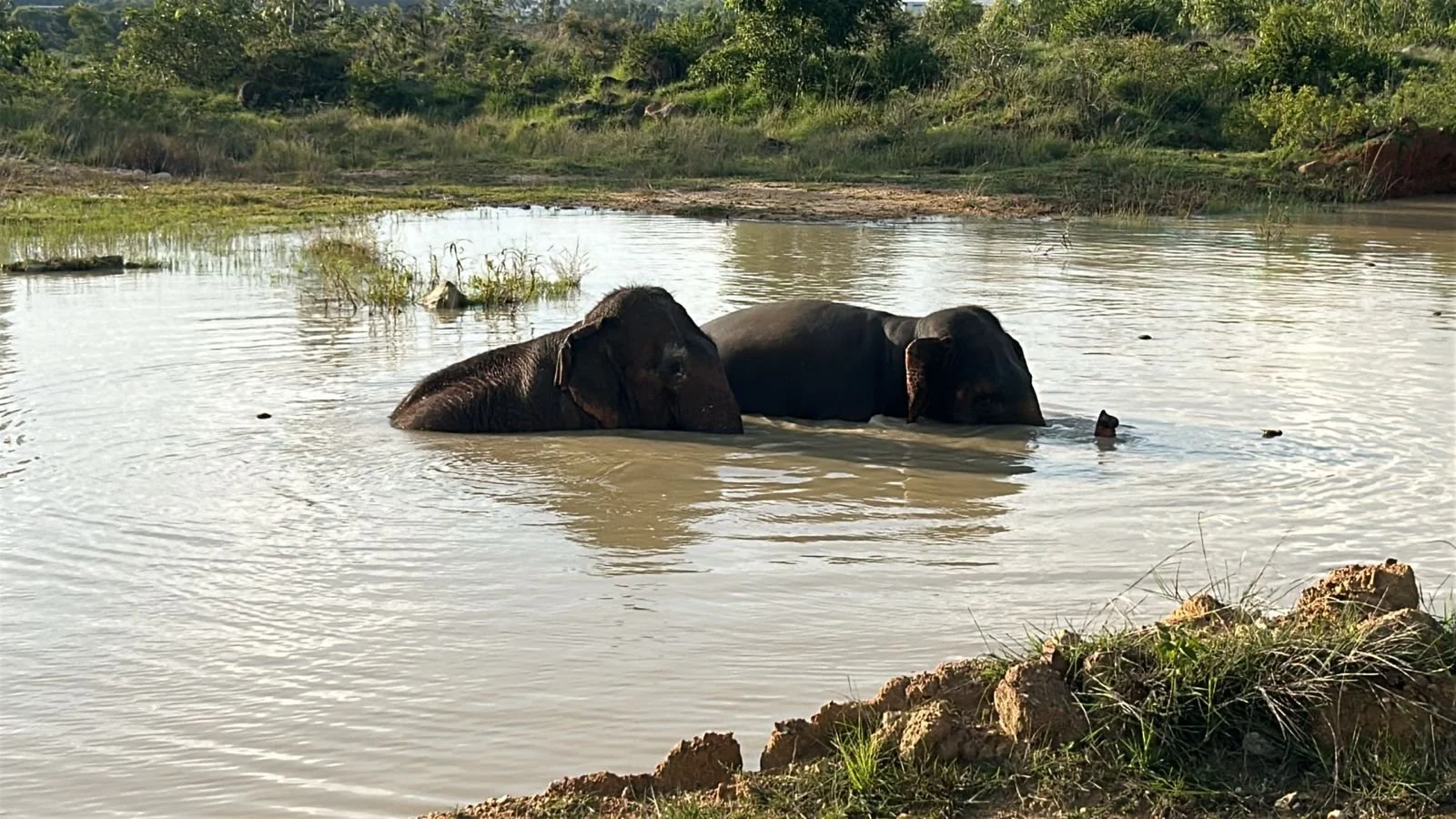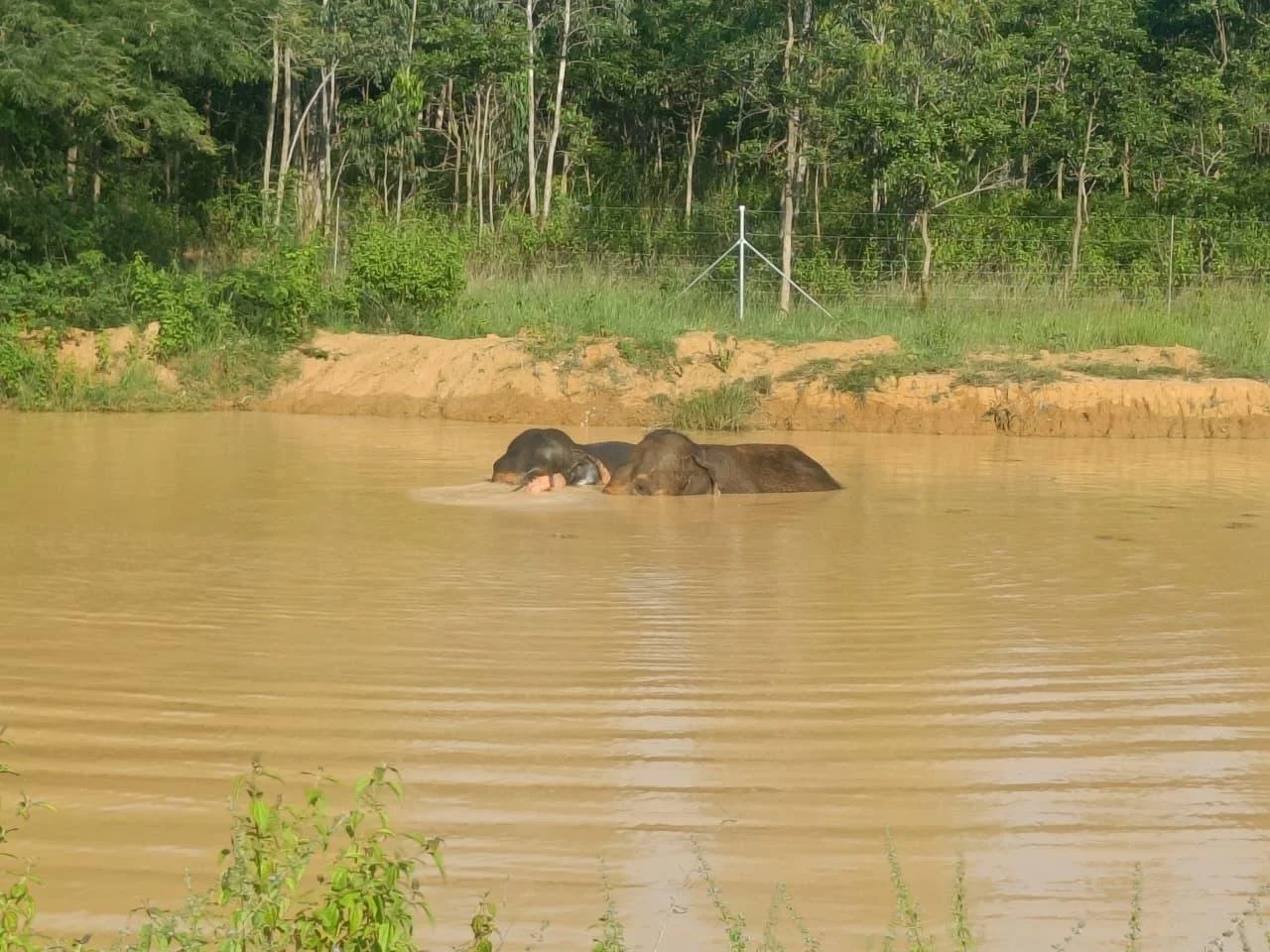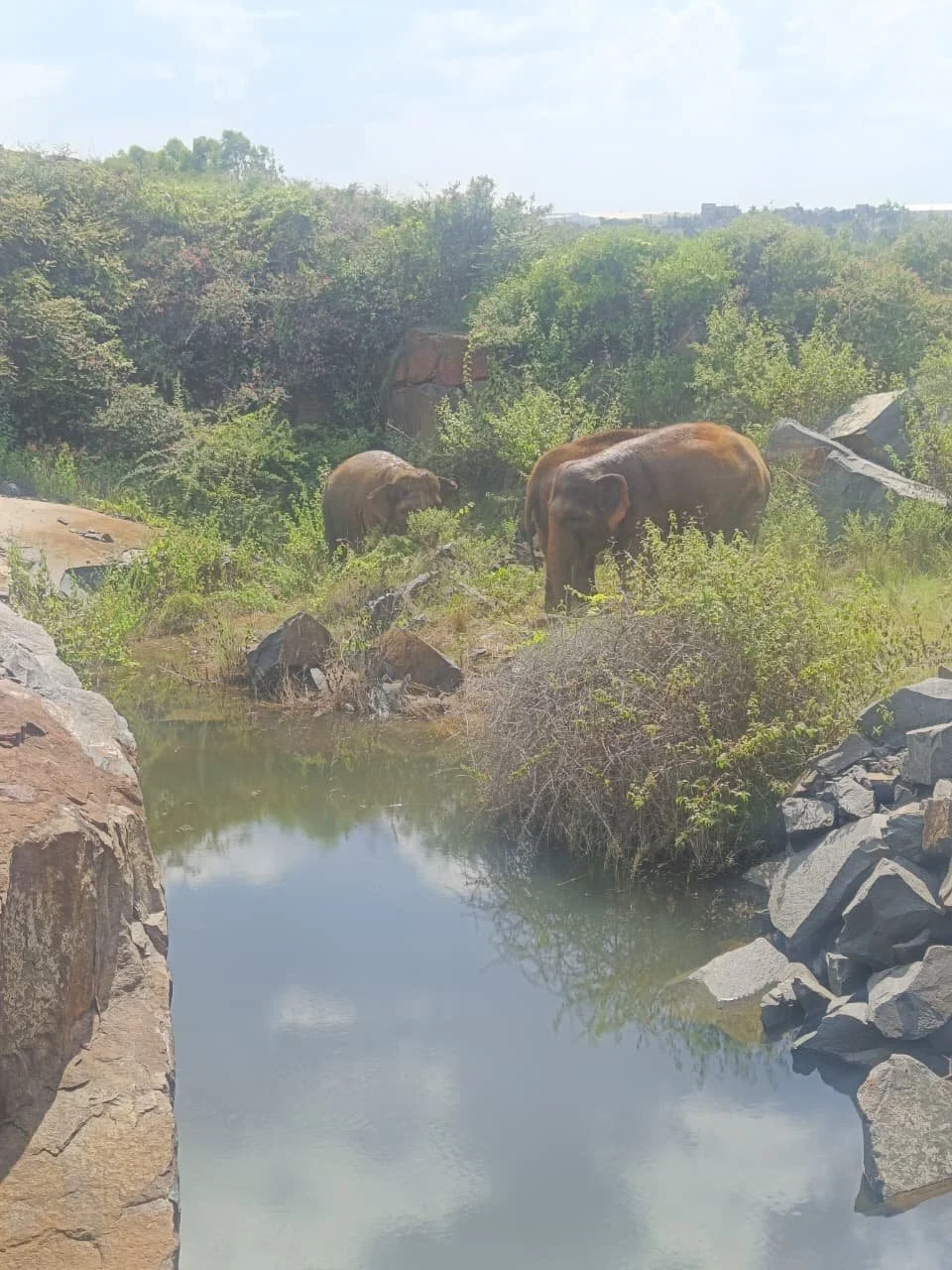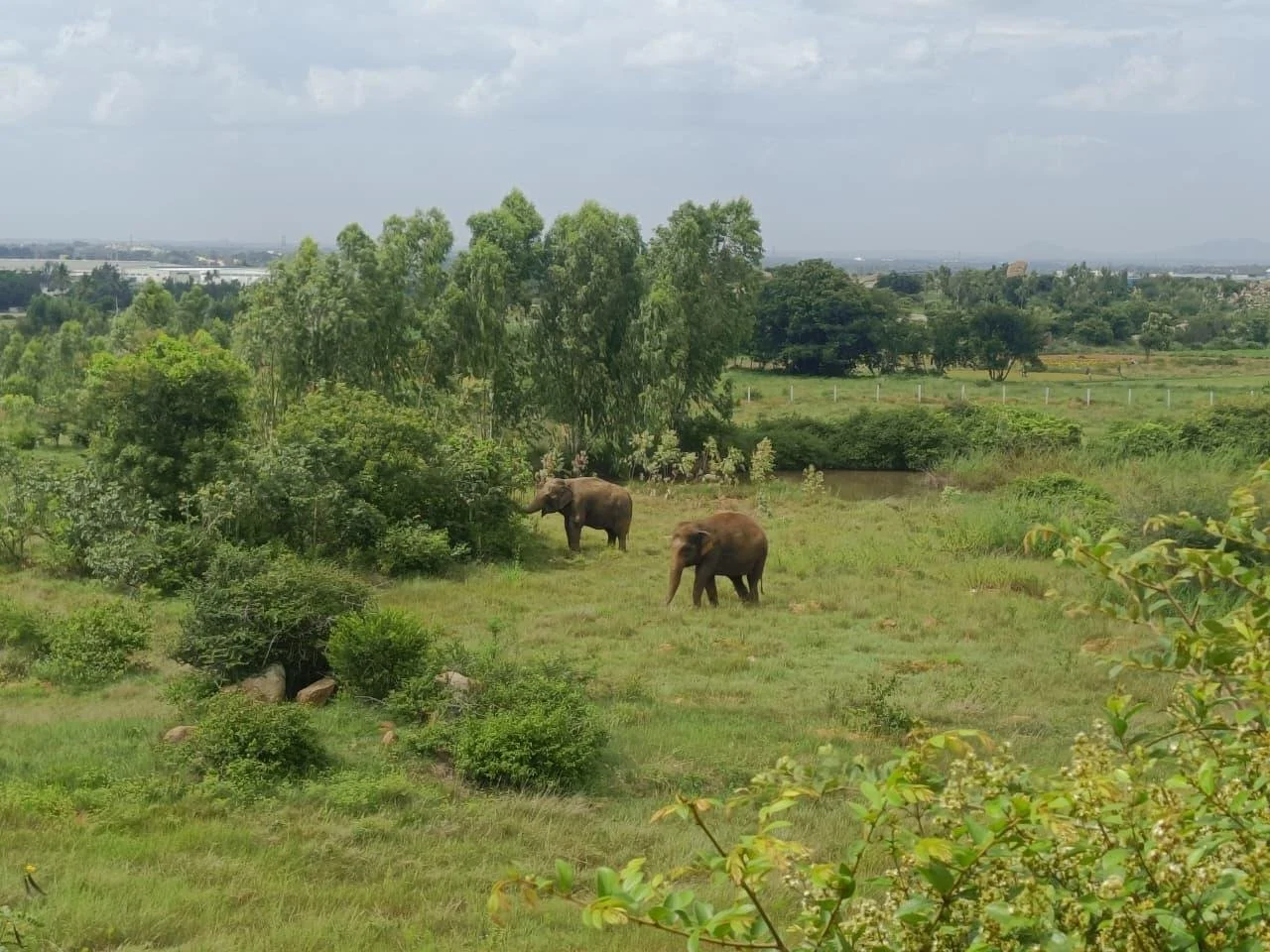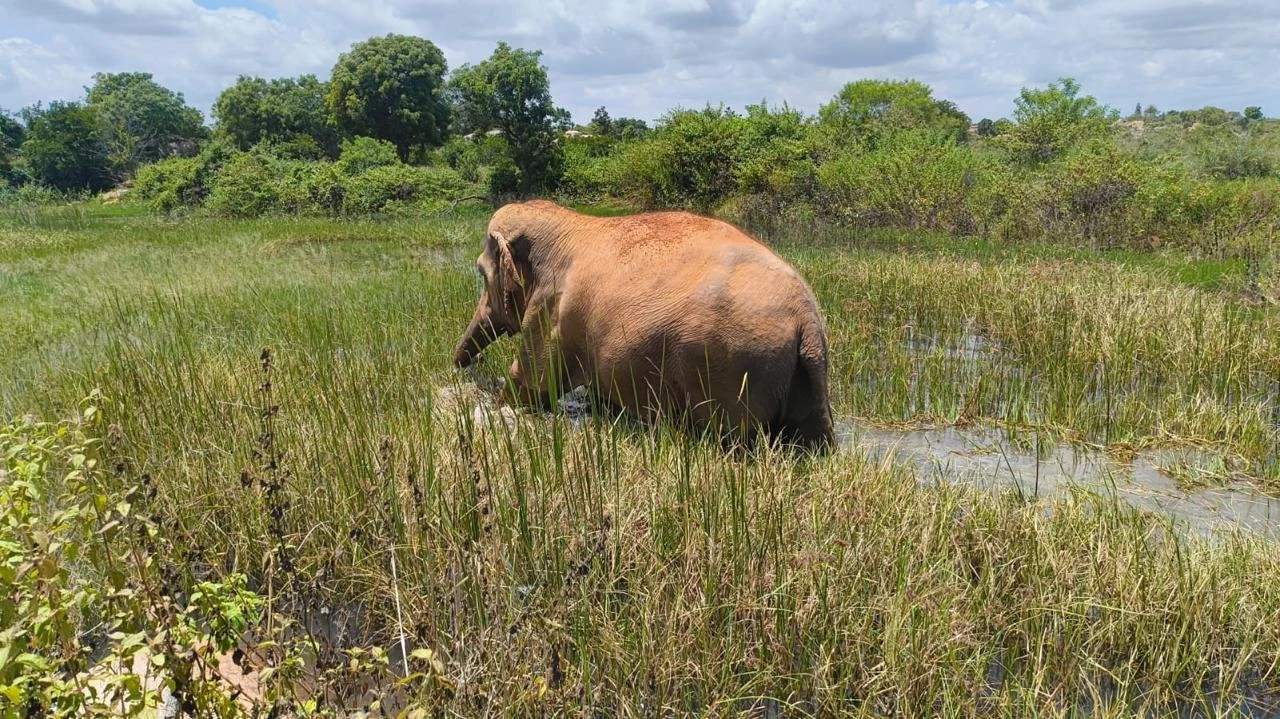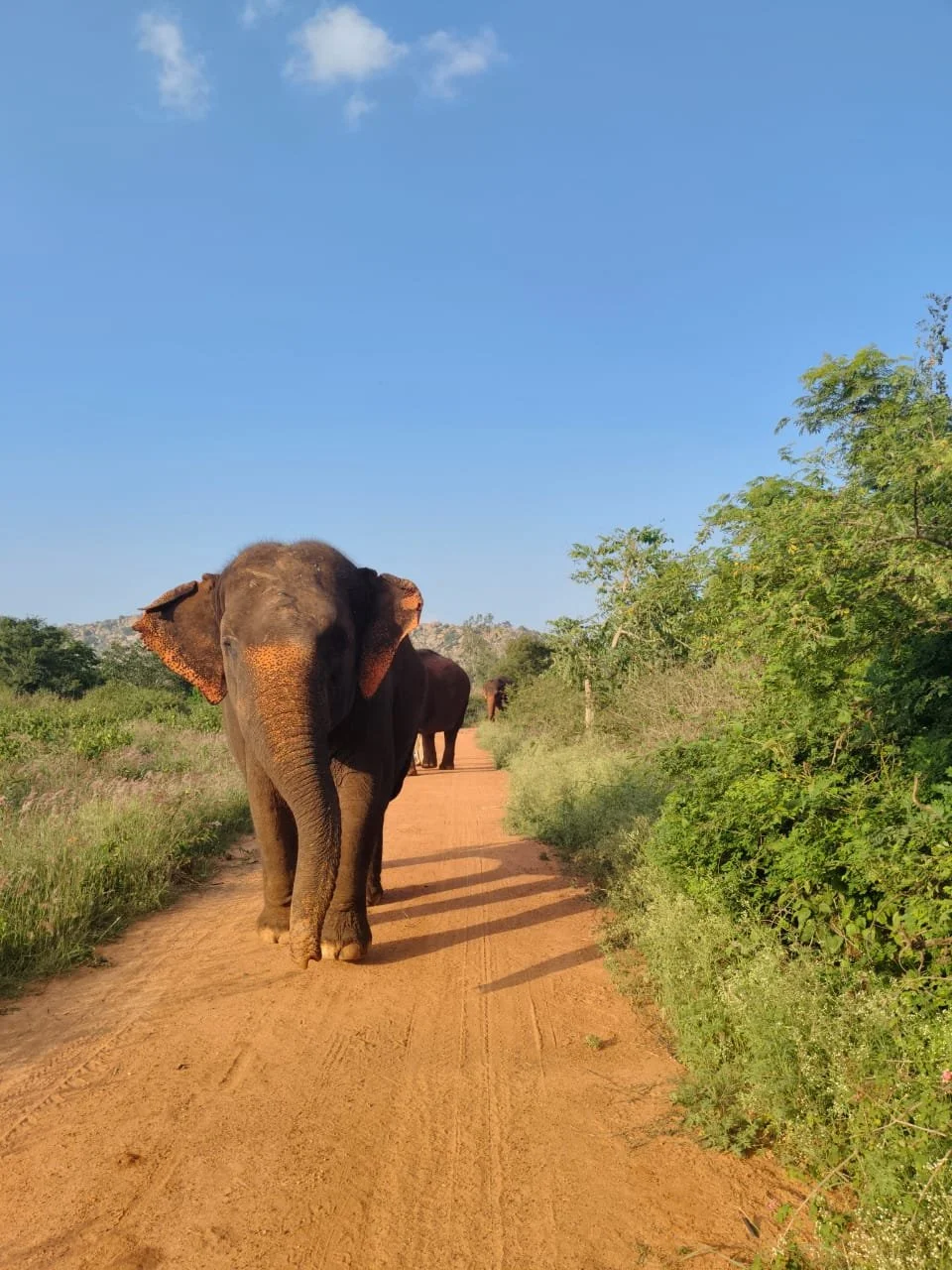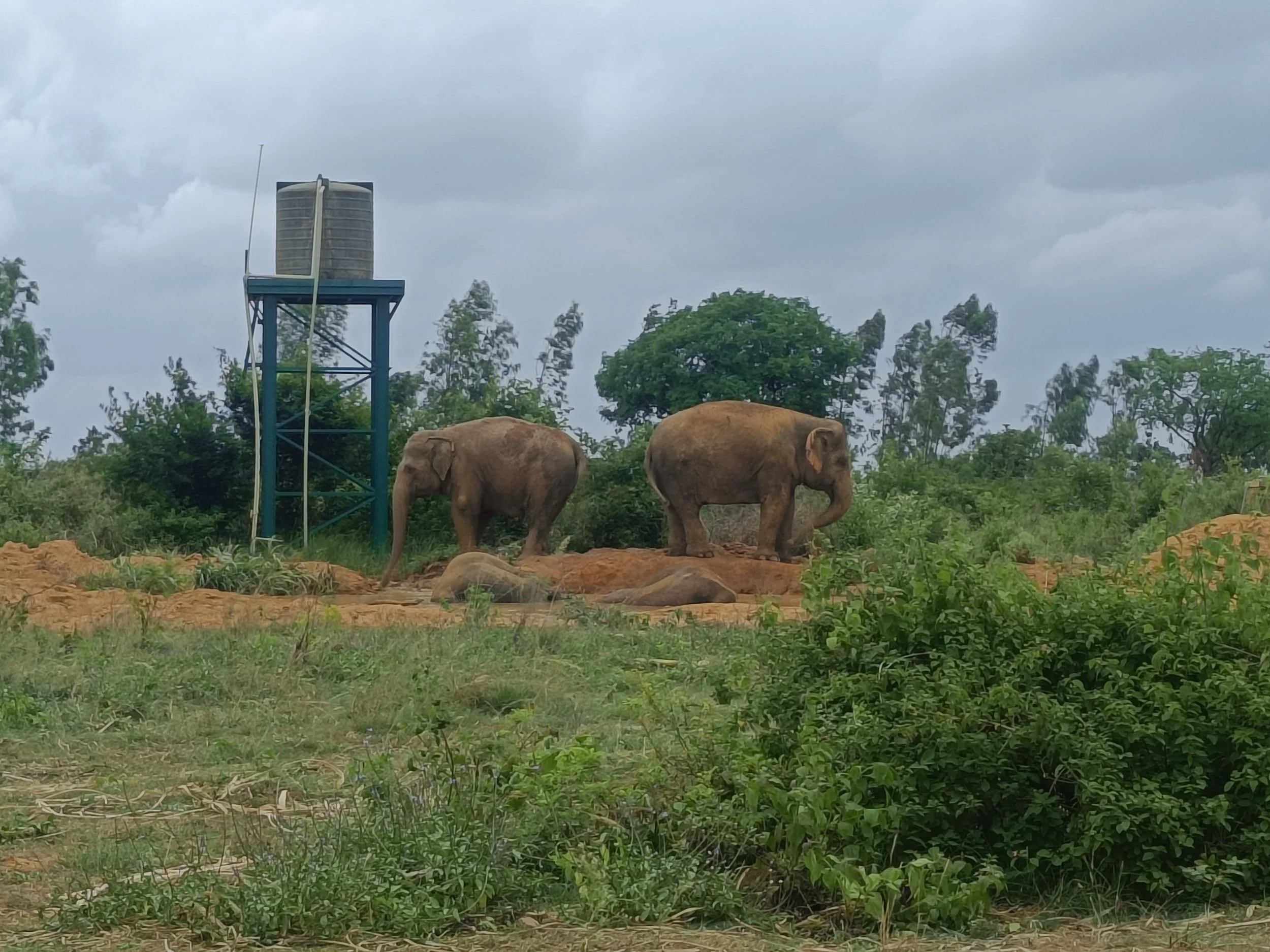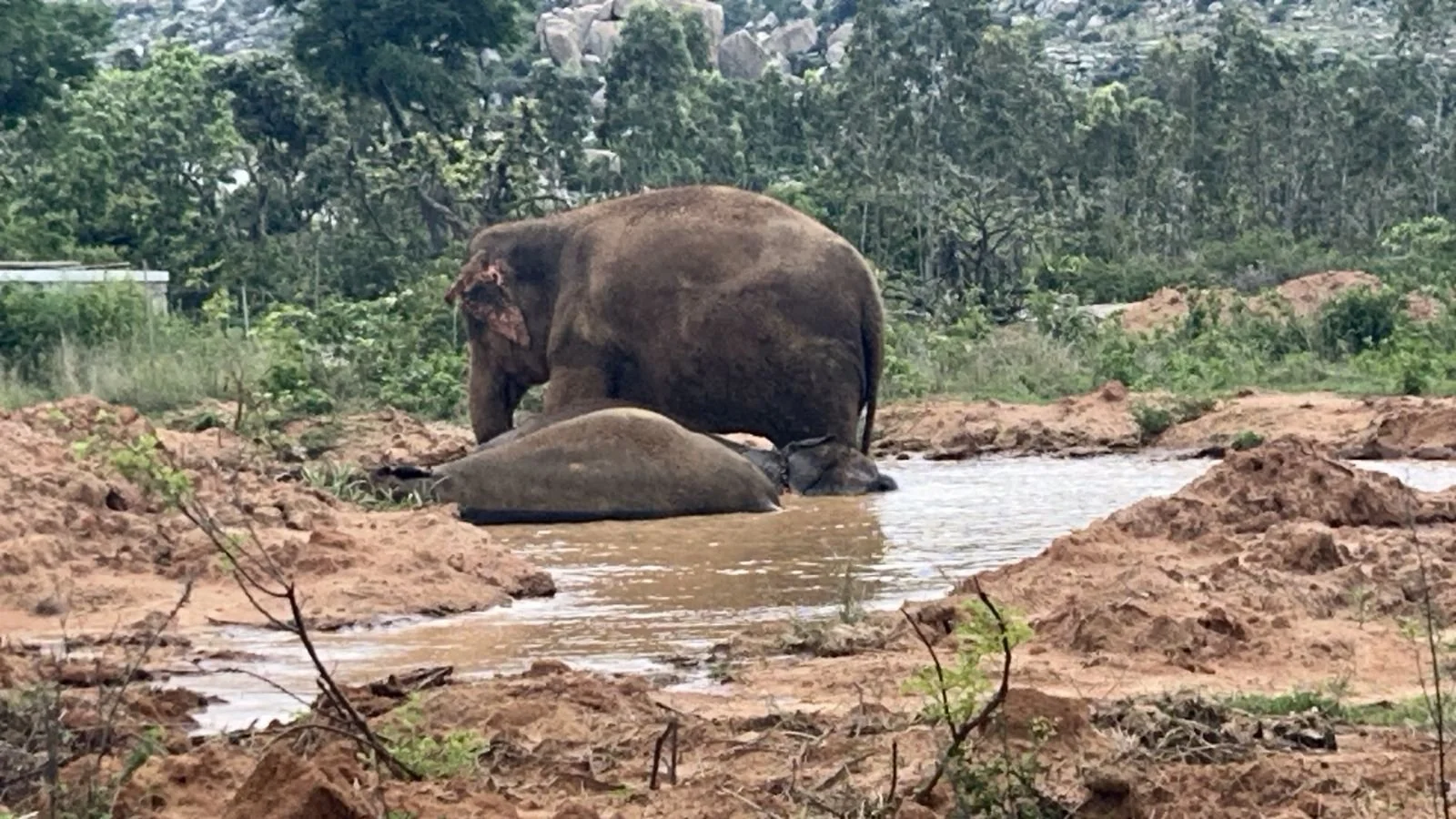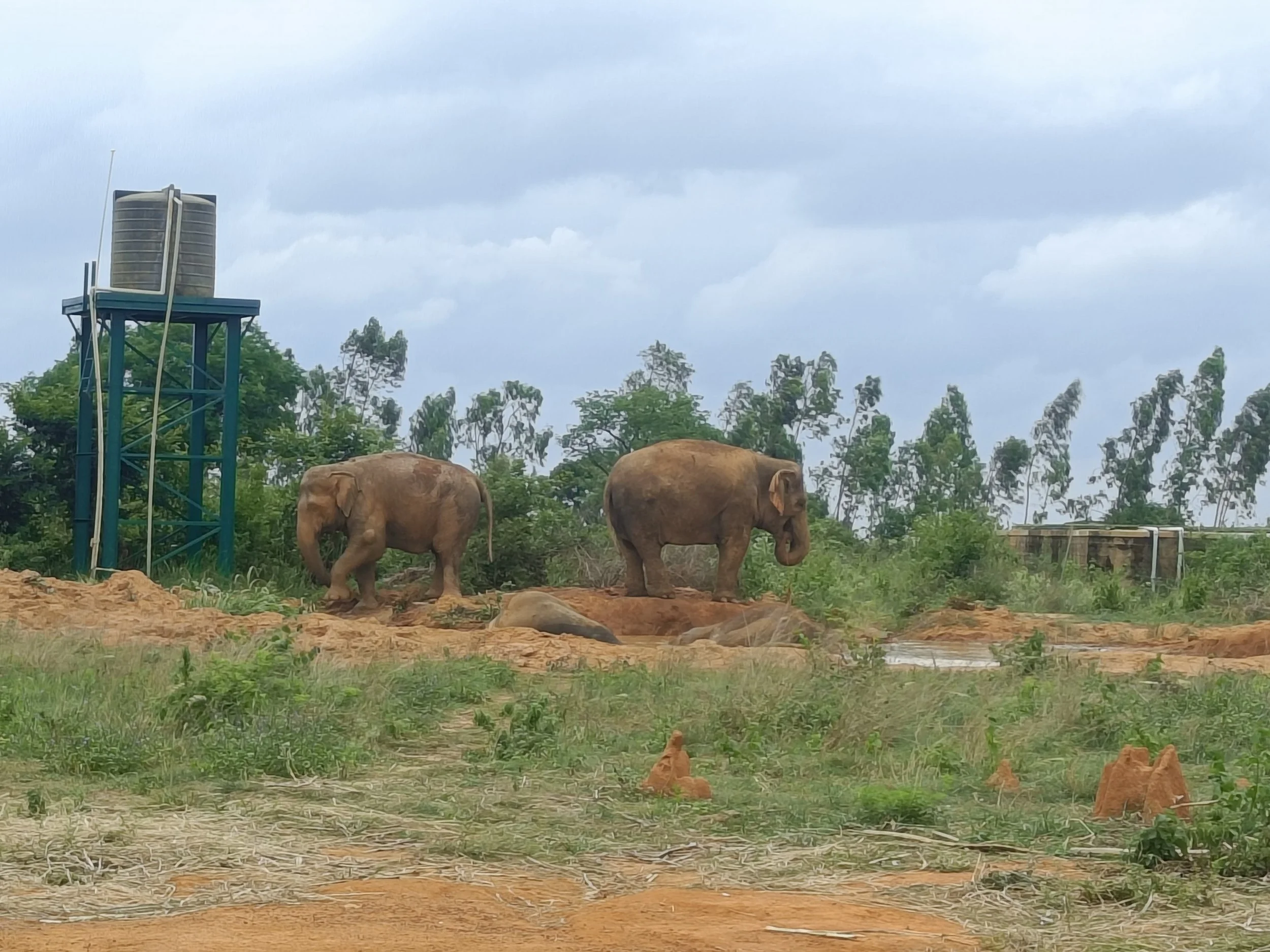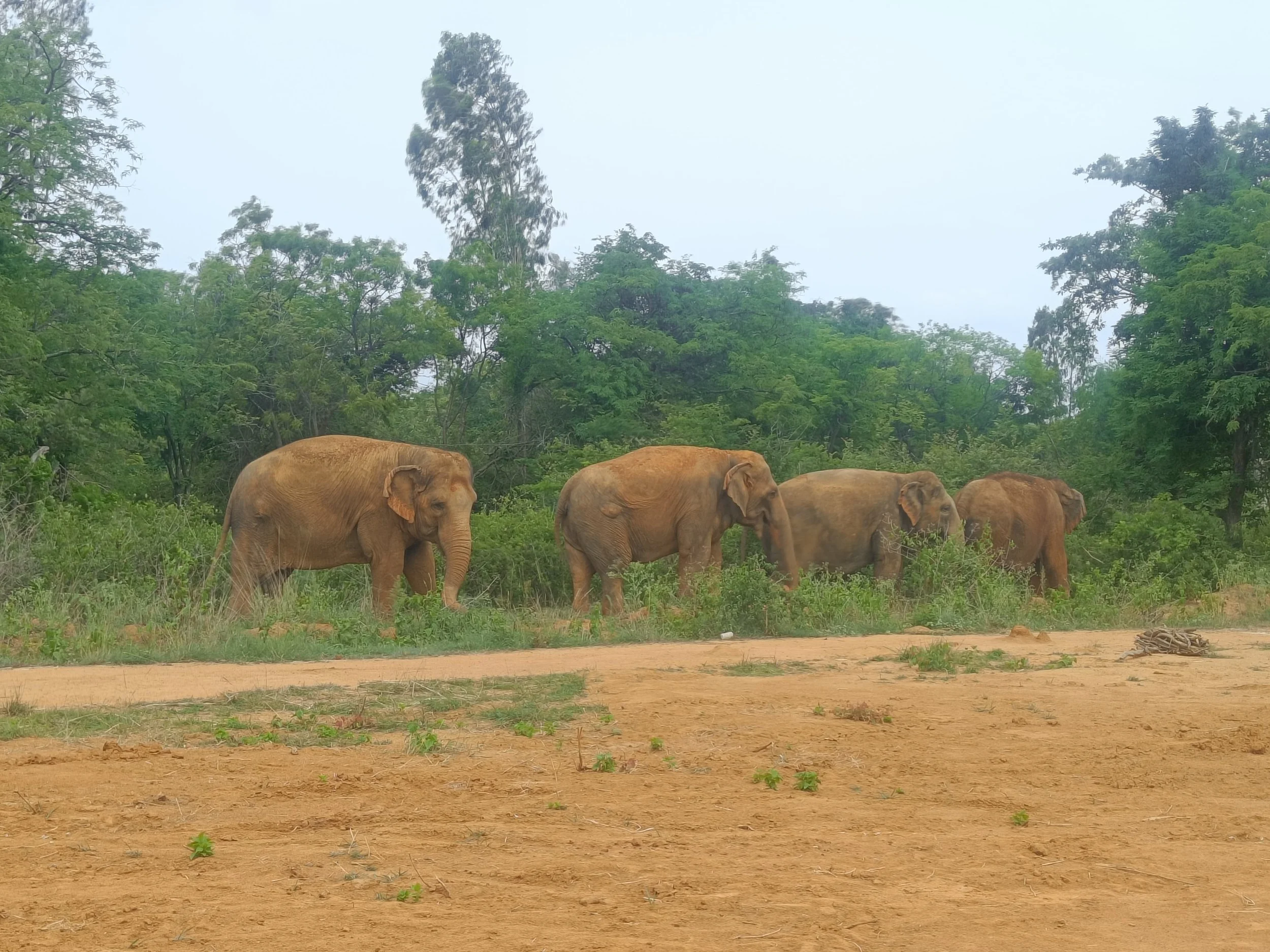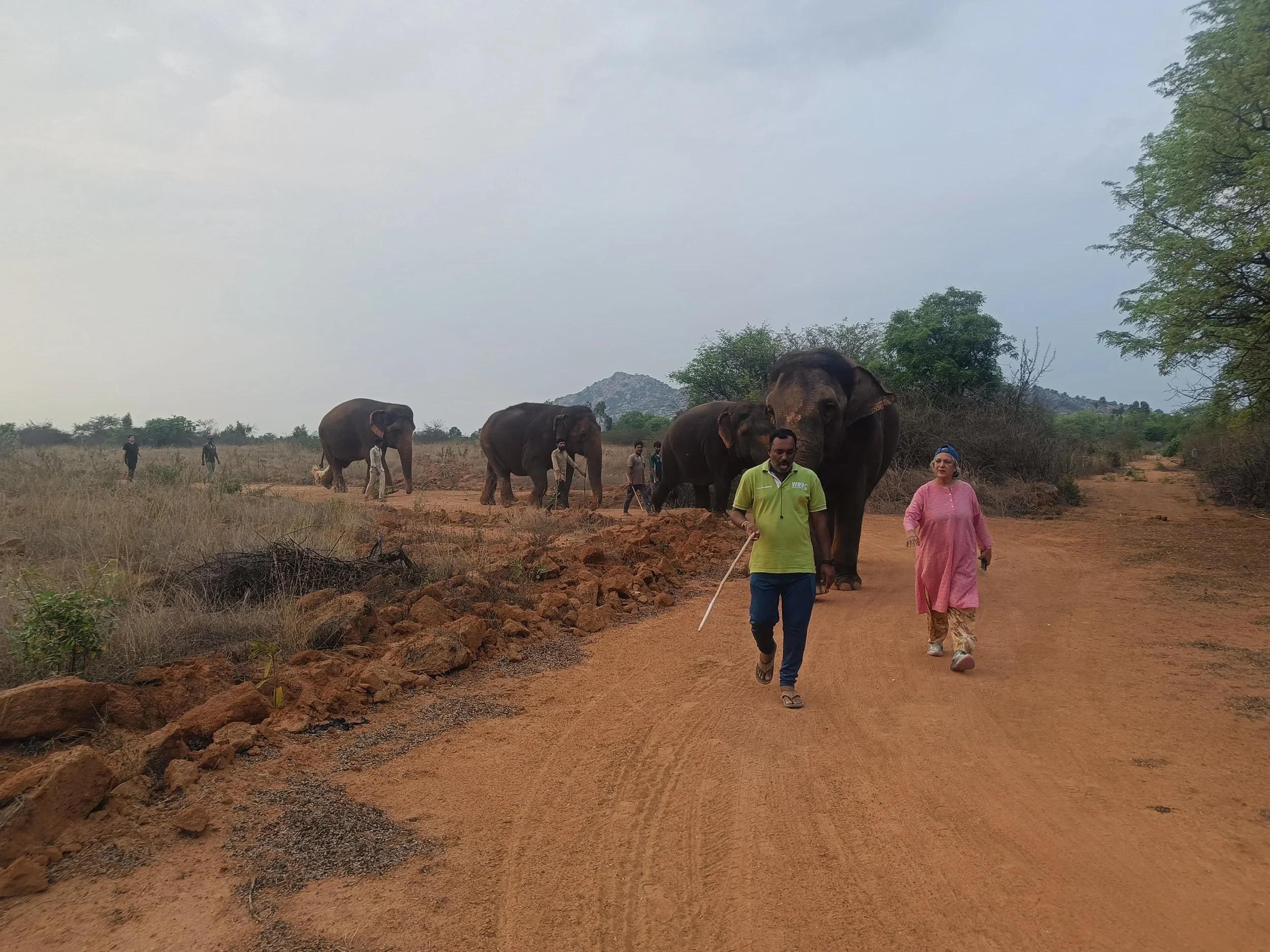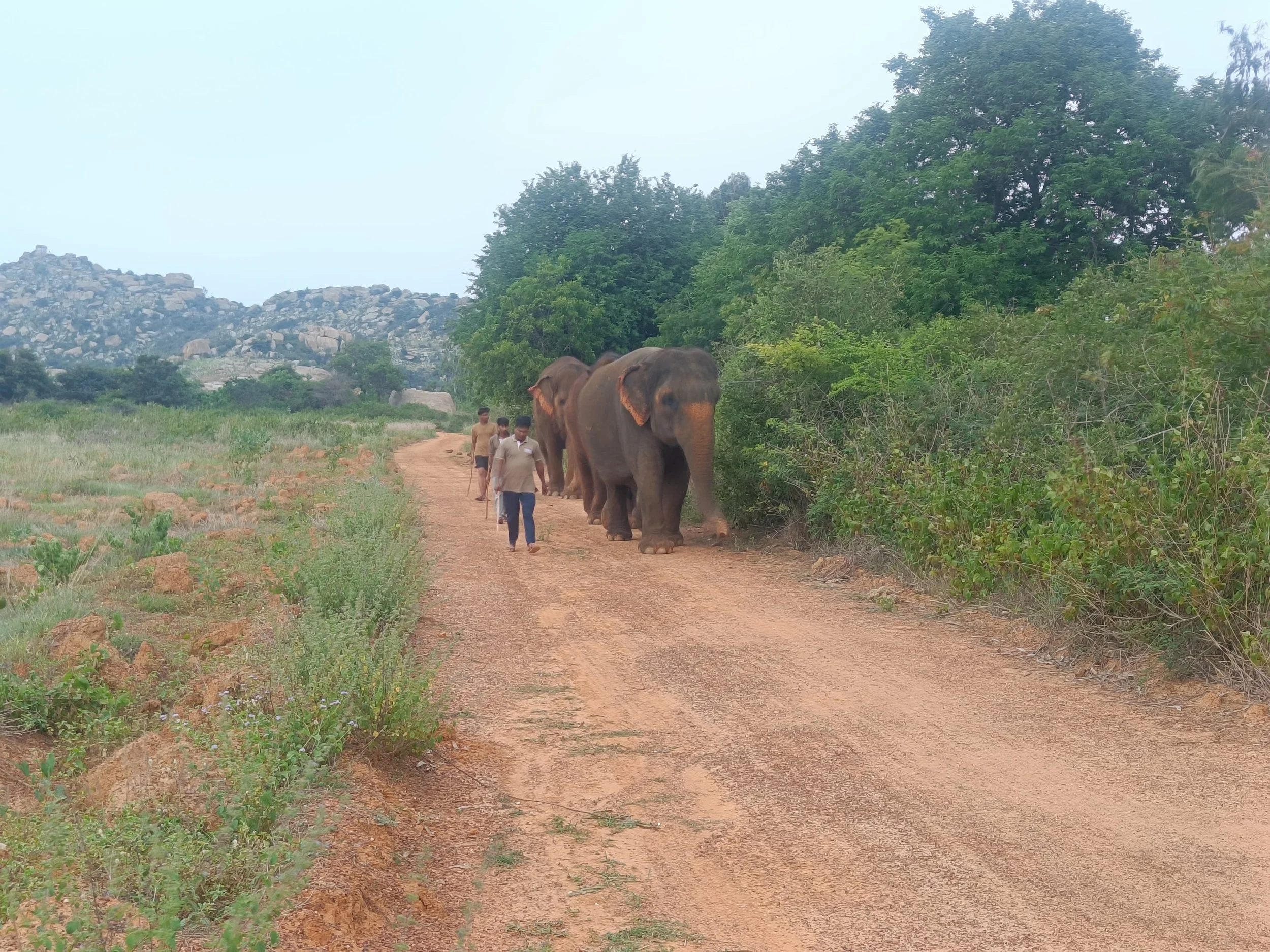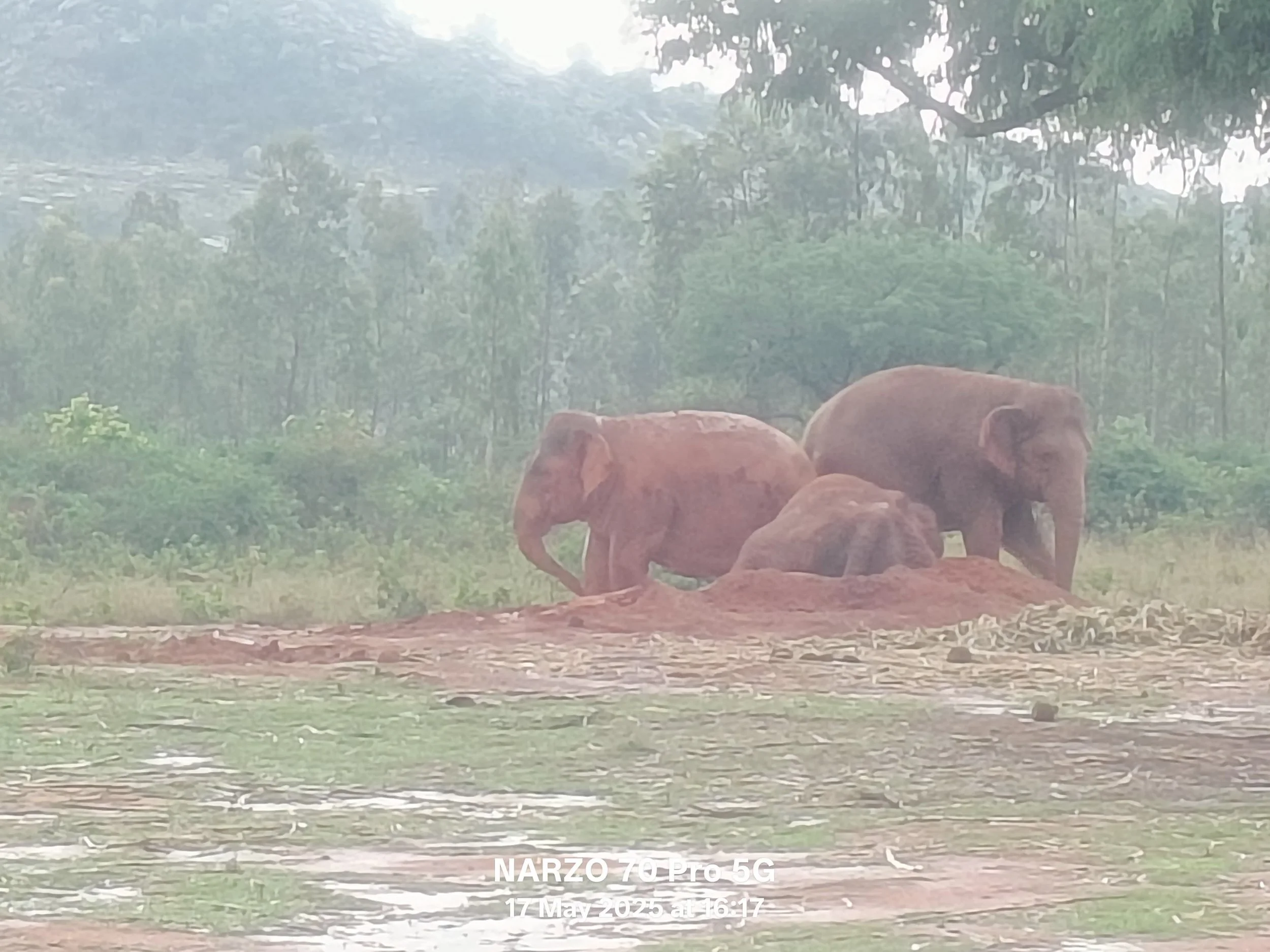From Trauma to Healing: Rehabilitating Captive Elephants
One of our newest partner groups is the Wildlife Rescue and Rehabilitation Centre (WRRC) in Karnataka, India. They rescue elephants who have endured abuse, poor conditions and harsh treatment in captivity, offering them rehabilitation and healing in a peaceful sanctuary. Here, the elephants are given veterinary support, nutritious food, social interaction with other rescued elephants, and plenty of tender loving care.
Please read their latest report to see how your kind donations are helping rescued elephants in India:
Background
India is home to nearly 4,000 captive elephants - many of whom live under deeply distressing conditions. Torn from the wild at a young age, these elephants are often separated from their families, subjected to harsh training practices, and forced into environments that offer little in the way of proper nutrition, medical care, or social interaction. This results not only in physical ailments but also in long-term psychological trauma.
Captive elephants, much like humans, are social beings who naturally thrive in herds. Deprived of this fundamental social structure, their innate behaviours begin to fade, leading to emotional, cognitive, and physical deterioration—much like the impact of solitary confinement on humans. The consequence is a life marked by fear, stress, and suffering.
Rehabilitation is not just a compassionate response—it is a critical intervention. Providing rescued elephants with sanctuaries where they can heal, express natural behaviours, and bond with other elephants is essential for their well-being. These facilities offer enriched environments, proper veterinary care, and the opportunity to recover from years of neglect and abuse.
Our efforts have been focused on advancing the rehabilitation and care of these majestic animals—working to restore their dignity, health, and natural spirit, while also raising awareness about the urgent need for humane treatment of all captive elephants in India.
Veterinary Care
Many of the elephants suffer from health issues including epilepsy, chronic abscesses, foot problems, dry skin and osteoarthritis.
They are provided with appropriate treatments including vitamin, mineral and herbal supplements, wound dressings, foot care, skin care, deworming, massage, laser therapy, ointments or medications as required.
Feeding
All elephants at the facility follow a structured and balanced daily feeding schedule designed to meet their nutritional and behavioural needs. The day begins with 6 kg of sprouts (alternating between green gram and Bengal gram) provided at 7:00 AM, followed by 200 grams of jaggery and two coconuts at around 7:15 AM. By 7:30 AM, a fresh mix of seasonal fruits and vegetables is served—typically 5–6 kg per elephant.
From 8:00 AM to 4:00 PM, elephants have access to green fodder such as grass or banana stems (around 70–100 kg per elephant). In the evening, another round of fruits and vegetables is offered at approximately 4:20 PM (only for Lakshmi), followed by ragi balls at 6:15 PM— 10 kg for Lakshmi and 5 kg for Gowri. Night feeding consists of around 100 kg of grass for all elephants and continues till 10:30–11:00 PM.
Lakshmi receives an increased quantity of fruits and vegetables (10 kg in the morning and again in the evening) and has access to 20 kg of grass or 8 banana stems during the day, in addition to her night ration. This enhanced diet is tailored to her size and health requirements.
Enrichment
Enrichment activities at the Elephant Care Facility are intentional and structured interventions aimed at enhancing the physical health, psychological well-being, and expression of natural behaviours in captive elephants - particularly those undergoing rehabilitation after prolonged periods of neglect, injury, abuse, or inadequate care.
In the wild, elephants spend most of their day grazing, socializing, walking, bathing, and interacting with diverse stimuli in their environment. Captive conditions often limit these behaviors due to space constraints, predictable routines, and the psychological impact of trauma. Enrichment at the facility seeks to bridge this gap by simulating key aspects of the wild and encouraging instinctive, species-appropriate behaviour.
Conclusion
This quarter, the Elephant Care Facility continued to strengthen its commitment to the rehabilitation and long-term well-being of rescued elephants. Through consistent veterinary interventions, dietary adjustments, and enrichment activities, we were able to address complex health challenges—ranging from chronic abscesses, osteoarthritis, and epilepsy, to nutritional imbalances and behavioral concerns. Intentional weight management programs and routine foot care have played a vital role in improving mobility and overall health, while regular monitoring of blood parameters ensures that emerging deficiencies and imbalances are corrected in time.
Feeding protocols remained structured and balanced, providing tailored nutrition to meet the specific requirements of each elephant. This quarter also emphasized the role of enrichment in rehabilitation: by encouraging natural behaviors such as foraging, bathing, and social interaction, enrichment activities have not only improved the elephants’ physical health but also contributed to psychological healing from years of captivity and trauma.
While ongoing conditions such as epilepsy, arthritis, and chronic wounds require long-term management, the steady progress observed in weight stabilization, wound recovery, improved skin and foot health, and increased responsiveness to enrichment activities reflect the positive impact of a holistic rehabilitation approach.
Our work this quarter highlights the importance of combining medical care, nutrition, and behavioral enrichment to restore dignity and well-being to captive elephants. Moving forward, we remain committed to refining our treatment strategies, expanding enrichment opportunities, and deepening our efforts to create a safe, healing environment where these elephants can regain their natural strength, spirit, and freedom of expression.


